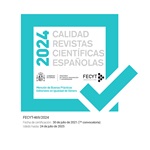La evolución del pensamiento liberal a través de Flórez Estrada, Argüelles y Toreno. (RI §407217)

The evolution of liberal thought through Flórez Estrada, Argüelles and Toreno -
Marta Friera Álvarez
Para comprender el tránsito del Antiguo Régimen al Liberalismo es fundamental analizar la evolución del pensamiento jurídico-público de los hombres que protagonizaron el cambio, sobre todo de aquellos que lo hicieron desde una posición política de primera fila. Entre ellos destacan tres asturianos de la talla de Álvaro Flórez Estrada, Agustín Argüelles y José María Queipo de Llano, VII conde de Toreno.
Los tres vivieron entre la segunda mitad del siglo XVIII y la primera del XIX, de modo que, a través del estudio comparado de su pensamiento constitucional puede reconstruirse el origen y la evolución general del primer liberalismo español, enormemente influenciado por la doctrina francesa.
Una primera etapa de tránsito corresponde al reformismo ilustrado y su defensa de la llamada Constitución histórica española. Su núcleo: la Monarquía pactista, en la que la soberanía es compartida entre el rey y el reino y el poder real está limitado por Leyes Fundamentales, fruto de procesos normativos, en general, consuetudinarios. Aunque tal sistema constitucional puede identificarse con el inglés, la doctrina de las Leyes Fundamentales se toma de Francia.
Pero pronto, de la mano del iusracionalismo europeo, también fundamentalmente francés, parte de los ilustrados españoles asumieron nuevos principios que evolucionaron hacia el liberalismo. En concreto: la soberanía nacional, que trae como consecuencia el poder constituyente y el nuevo concepto de Constitución racional normativa, la separación de poderes y el reconocimiento de derechos naturales individuales.
Conforme se desarrollan los acontecimientos históricos decimonónicos, el pensamiento liberal siguió evolucionando, de nuevo, de la mano de la doctrina francesa. Las diferencias entre sus dos principales ramas ideológicas, moderada y progresista, se manifiestan claramente a través de Toreno, en el primer caso, y Argüelles, en el segundo. Por su parte, Flórez avanzará, incluso, hacia un pensamiento democrático y social.
I. De la Ilustración al liberalismo. II. Flórez Estrada, Argüelles y Toreno. III. El comienzo de la guerra de la independencia. IV. Las Cortes de Cádiz y la evolución del liberalismo decimonónico.
In order to understand the transition from the anciene regime to liberalism, it is essential to analyze the evolution of the legal-public way of thinking of the men who led this change, above all of those who did so from the political front line. Among these, three eminent Asturians stand out, namely Álvaro Flórez Estrada, Agustín Argüelles and José María Queipo de Llano, 7th Count of Toreno.
The three lived between the second half of the 18th and the first half of the 19th centuries. Thus, the origin and overall evolution of the first wave of Spanish liberalism –hugely influenced by French doctrine– may be reconstructed via the comparative study of the constitutional thinking of these men.
A first transitional stage corresponds to enlightened reformism and its defense of what is known as the Historical Constitution of Spain. At its core lay pact-making monarchy, in which sovereignty is shared by the monarch and the realm and royal power is limited by Fundamental Laws, the fruit of regulatory processes, generally those of common law. Although a constitutional system of this kind may be associated with the English system, the doctrine of Fundamental Laws is taken from France.
However, in the wake of European rationalism –also fundamentally French-led–, some of Spain's enlightened thinkers soon assumed new principles which evolved towards liberalism; specifically, national sovereignty, which results in constitutional power and the new concept of a rational regulatory Constitution, the separation of powers and the recognition of individual natural rights.
Liberal thinking continued to evolve in line with historical events in the 19th century, once more led by French doctrine. The differences between the two main ideological branches –moderate and progressive– are clearly manifested through Toreno, in the former case, and Argüelles, in the latter. Flórez, on the other hand, was even to press forward towards a position of democratic, social thinking.
I. From Enlightenment to liberalism. II. Flórez Estrada, Argüelles and Toreno. III. The beginning of the war of independence. IV. The Cortes of Cadiz and the evolution from the 19th century liberalism.

 DIRECTORA
DIRECTORA